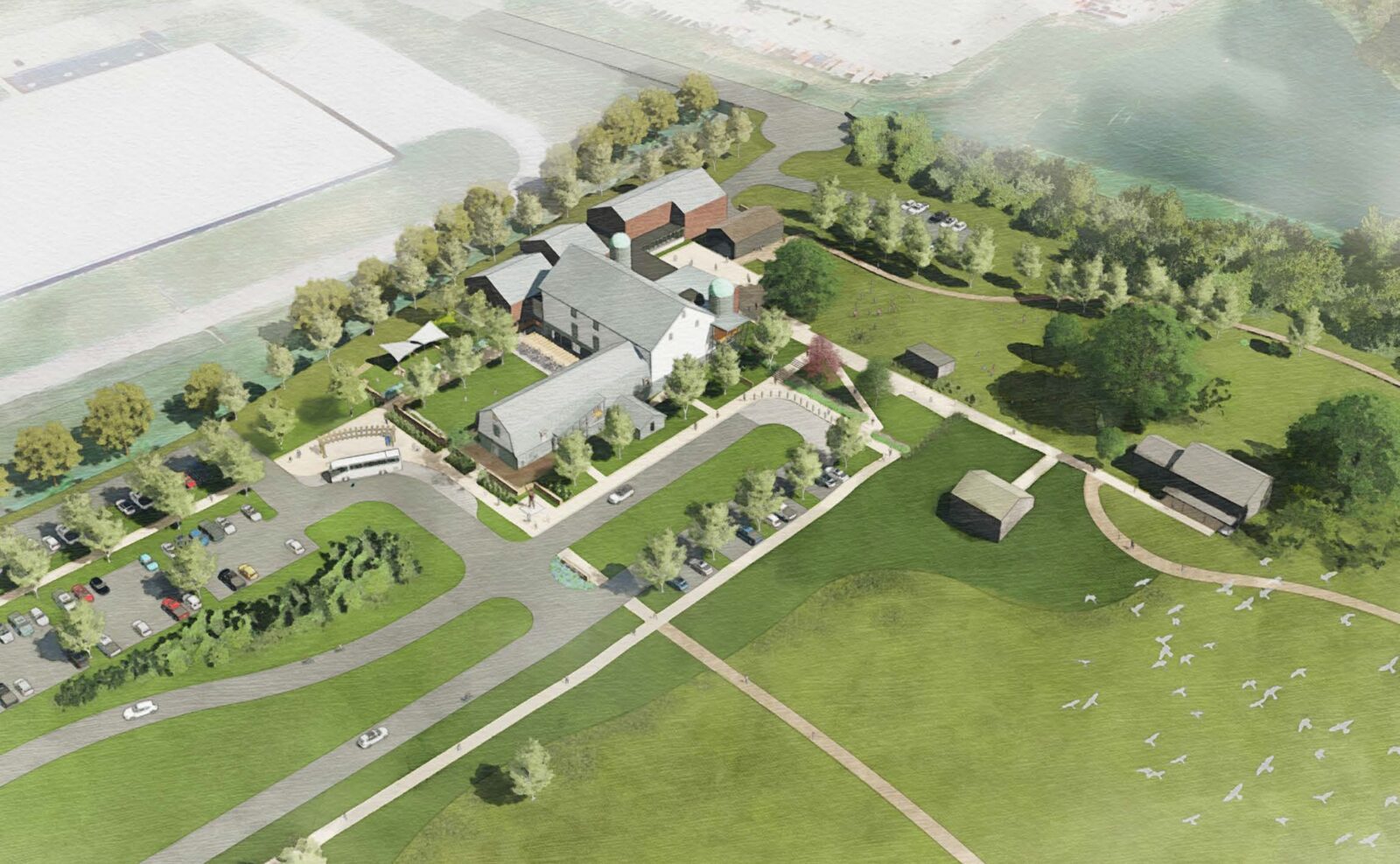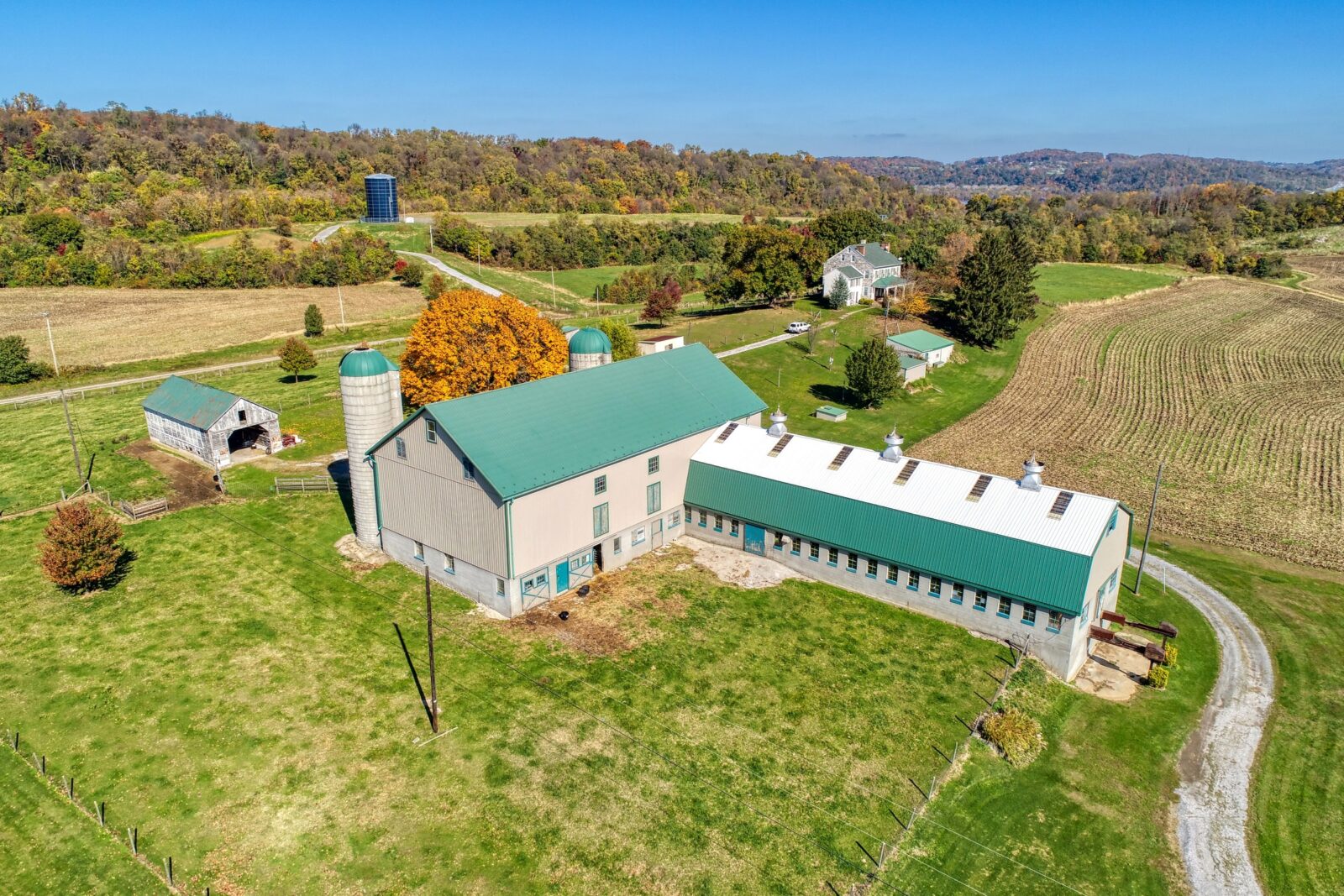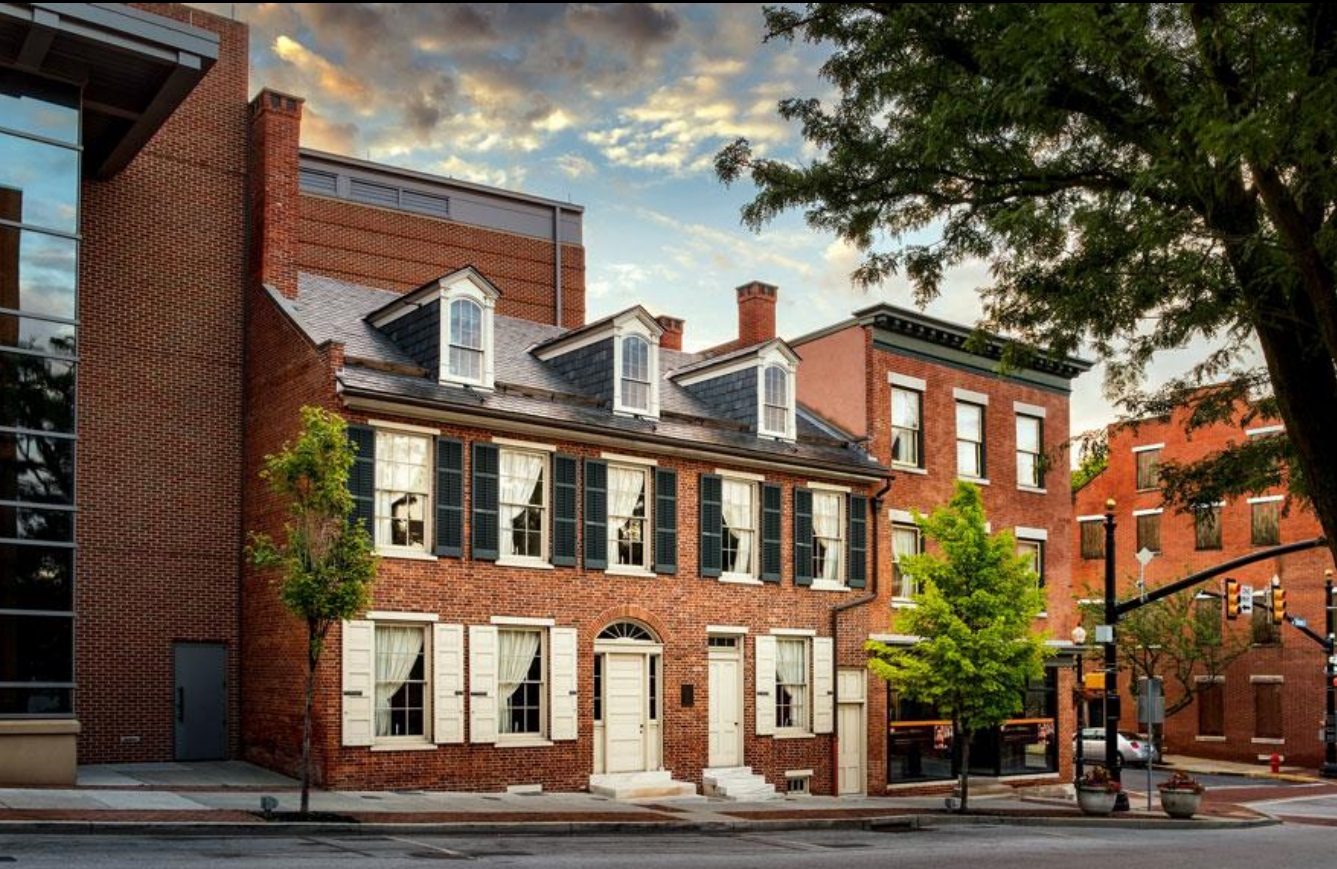Economic Impact: Lancaster County Tourism & History
By Tim Stuhldreher for the Lancaster County Community Foundation
Mark Platts is immensely proud of Lancaster and York counties’ designation as the Susquehanna National Heritage Area.
It reflects Congress’ recognition that natural and cultural assets in the two counties are of national importance, and creates a partnership between the federal government and the local Susquehanna National Heritage Area (SNHA) nonprofit — which Platts leads as president and CEO — to protect them and to develop resources and amenities for visitors and scholars.
The nonprofit estimates the enhancements it has in the works could bring an extra $100 million a year to the region through increased tourism.

A rendering of the Susquehanna Discovery Center & Heritage Park planned at the Mifflin Farm. (Photo: Susquehanna National Heritage Area)
Since January, however, Platts has grown apprehensive that federal budget cuts could jeopardize that outcome. Recently, there have been drastic cuts to the National Park Service office staff that SNHA needs to sign off on approvals and release funding. More worrisome, the administration’s FY2026 budget proposes to zero out a funding stream that accounts for a quarter of the SNHA’s annual revenue.
Were that to happen, it could drastically curtail the SNHA’s operations and future plans, Platts said.
About the SNHA
The Susquehanna National Heritage Area was designated as such in 2019, after more than a decade of planning and lobbying. The legislation was signed by President Donald Trump, then in his first term.
Lancaster and York counties are home to a wide array of cultural and recreational resources, including more than 120 historic sites — pre-colonial Native American petroglyphs, Revolutionary War landmarks, Underground Railroad stations and Civil War battlegrounds.
They contribute to a bustling regional tourism economy. In Lancaster County alone, tourism brought nearly 10 million visitors to Lancaster County in 2023 and generated $2.58 billion in visitor spending.
A major new site is coming online next year: LancasterHistory‘s Thaddeus Stevens & Lydia Hamilton Smith Center for History & Democracy, a $24 million project in the heart of Lancaster city. It is projected to draw tens of thousands of visitors a year and generate $90 million in economic impact in its first five years.
It will complement other regional sites, including Wheatland, President James Buchanan’s mansion, which is also operated by LancasterHistory; and the Mifflin Farm, a documented Underground Railroad stop and Civil War battle site in York County.
The SNHA acquired the Mifflin Farm in 2023. It is to serve as the core of the Susquehanna Discovery Center & Heritage Park, envisioned as a world-class destination along the lines of the Gettysburg Museum & Visitor Center, with an Underground Railroad learning center, art museum and a Freedom Path to the Susquehanna River. The SNHA anticipates spending $50 million on the project and related infrastructure over the next decade; its projections show the center drawing an additional 50,000 visitors a year.

Mifflin Barn (Photo: Susquehanna National Heritage Area)
It will join two other visitor centers operated by the SNHA, the Zimmerman Center and the Columbia Crossing River Trails Center. They are hubs for the SNHA’s numerous educational and recreational programs, including school field trips, canoe and kayak excursions and tours on its historic Chief Uncas motor yacht.
Some 35,000 people visit SNHA facilities each year. The organization has become a “cornerstone” of the economy in the Susquehanna River corridor, which is home to a growing ecosystem of tourism and recreation businesses, Lancaster Chamber President & CEO Heather Valudes said.
When an organization like the Susquehanna National Heritage Area can focus energy and draw national attention, “we all win,” LancasterHistory President Robin Sarratt said: “More people are going to come here. More people are going to stay longer.”
Federal funding at risk
About a third of the SNHA’s $2.1 million budget comes from federal services. The largest component is an annual $500,000 National Heritage Area appropriation through the National Park Service.
In the administration’s detailed budget, released in late May, that line item is eliminated. Cuts have been proposed before, but this is the first time it’s been done away with altogether, Platts said.
He’s hopeful Congress will act to restore it. In mid-May, 66 U.S. House members signed a letter calling for “sufficiently robust funding” for National Heritage Areas. Among them was U.S. Rep. Lloyd Smucker, who represents Lancaster County and southern York County and who championed the designation of the SNHA. (Smucker’s office did not reply to a request for additional comment.)
The Lancaster Chamber called for maintaining the $500,000 funding level in letters to U.S. Reps. Scott Perry and Lloyd Smucker and U.S. Sens. John Fetterman and Dave McCormick
Other federal funding is at risk, too. Thanks to its status as a stop on the Captain John Smith Chesapeake Trail, the SNHA has been receiving a grant through the National Historic Trail program. It funds field trips that served more than 600 local children in 2024-25. Another federal grant funded planning for the Susquehanna Discovery Center.
In January, about $440,000 of the SNHA’s appropriation was caught up in the administration’s funding freeze. For two weeks, the organization didn’t know if it would have access to money Congress had appropriated for it, Platts said. Though the freeze was rescinded, there have still been delays in getting all the money transferred.
Meanwhile, staffing at the National Park Service office that supports National Heritage Areas and other programs is being cut from 22 to four. That will lead to tremendous backlogs, Platts said, and long waits for approvals on funding and requests like the Mifflin Farm’s pending application for listing in the National Register of Historic Places.
Public-private collaboration
The administration has argued that state and local governments should take on more responsibility for programs like NHAs. That’s not realistic, Platts said: Their resources are limited, especially given all the other responsibilities the federal government is seeking to pass down to them, from disaster aid to Medicaid.
National Heritage Areas are an outstanding example of public-private partnership, Platts said. They’re based in local communities and locally managed. On average, they leverage $5.50 in matching funds for every $1 the federal government provides.
Moreover, Congress made a commitment when it designated the SNHA. “They ought to back it up with funding,” Platts said. His organization is doing its part, he said, developing its resources in accordance with the standards outlined in the NHA law.
“We’re just starting to hit our stride,” he said. If federal cuts forced it to cut back, “that would be really sad.”
About LancasterHistory
Unlike the Susquehanna National Heritage Area, LancasterHistory doesn’t rely on a regular federal funding stream. Still, it’s been buffeted by the actions of the new administration in Washington, D.C.
On April 3, it received notice that a $500,000 National Endowment for the Humanities grant would be terminated. The grant funded exhibit design and construction at the Thaddeus Stevens & Lydia Hamilton Smith Center ($400,000) and two years of salary for an education hire ($100,000).

The Thaddeus Stevens & Lydia Hamilton Smith Center for History & Democracy. (Photo: LancasterHistory)
While most of the grant has already been received and spent, $50,000 of the education portion remains up in the air and potentially could be rescinded, LancasterHistory President Robin Sarratt said.
Further complicating matters, 80% of NEH staff were abruptly fired earlier this year. That’s leading to delays in communication and administrative processing, Sarratt said.
Another grant came from an organization that has recently been dismantled, the Institute of Museum & Library Services. The Stevens & Smith Center will have maximum accessibility for persons with disabilities; the $250,000 grant covered most of those design costs and a portion of construction.
That not only helps the 25% of the population who will have a disability at some point in their lives, elements like ramps and large fonts benefit everyone: “It’s a universally better experience,” Sarratt said.
Cultural sites like museums have civic value, and they can’t sustain themselves on visitor revenue alone, Sarratt said. They need support, including government support.
“It’s how these things remain available at affordable rates so that everyone can benefit from them,” she said.
